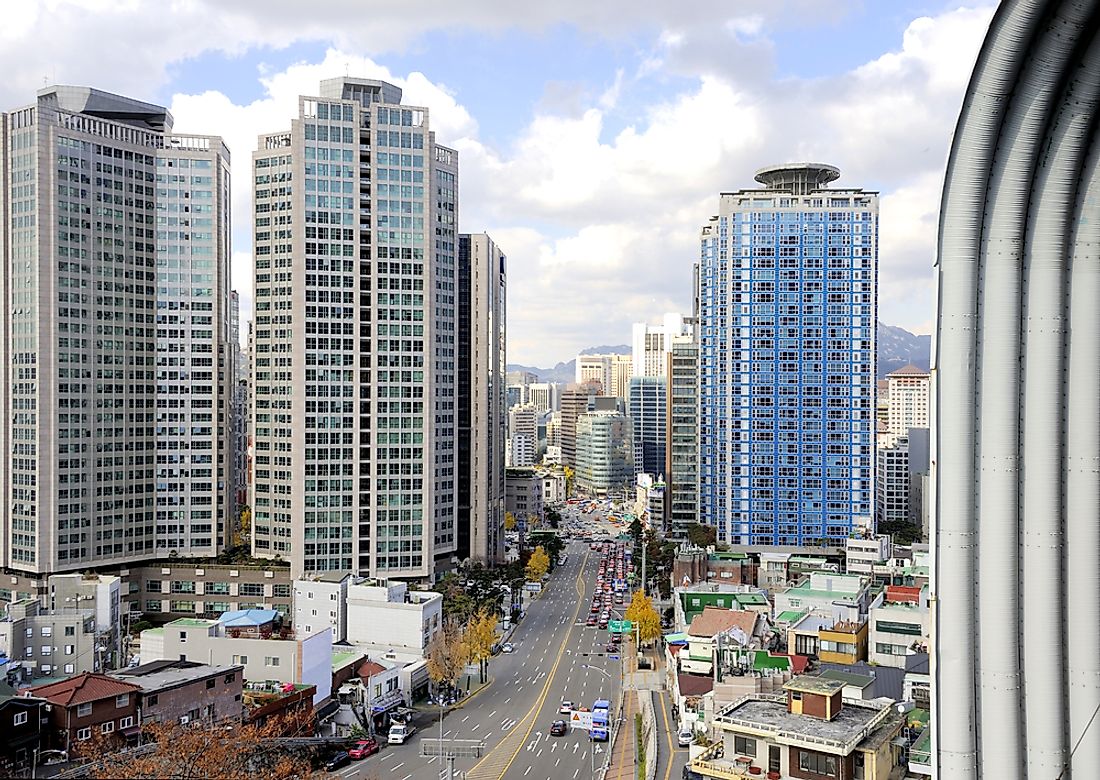What Are The Biggest Industries In South Korea?

South Korea is an independent state found in Eastern Asia and forms part of the larger Korean Peninsula. North Korea is the only country it shares its borders with. The country's capital city is Seoul, which is among the major global cities, which is home to about half of the country's population. Seoul is the world’s 4th largest urban economy. Currently, South Korea is one of the highly developed democracies having the highest rank regarding freedom of press in the whole of Asia. In 1996, the country joined the OECD and in 2006 it joined the development assistance committee of OECD. South Korea is also a member of the Paris Club and the G20.
Shipbuilding
In the early 1970s and 1980s, Korea emerged to be one of the world's leaders in shipbuilding, oil supertankers, and other oil drilling platform. The largest shipbuilder in the country was Hyundai which in the mid-1970s build a one-million-ton capacity drydock at Ulsam. Another major player in the shipbuilding industry is Daewoo, which in the 1980s managed to produce a 1.2 million ton facility at Okpo. However, in the early 1980s, the industry experienced a decline because of the global recession and oil glut, but in the late 1980s, there was a sharp increase, and in 1988 total orders of ships from Korea were valued at $1.9 billion. By the 1990s, shipyards in South Korea tripled their shipbuilding capacities and by 1999, the country had achieved global market leadership in shipbuilding. By 2008 the country was the world’s leader in shipbuilding, accounting for 50.6% of the Global market share.
Automobiles
South Korea's automotive industry is one of the world's largest. Previously, South Korea was only engaged in assembling parts which were imported from different countries, but today the country is one of the leading automobile manufacturing nations in the world. In 1988, the country's annual output 1.01 million units. During the 1990s, the country was manufacturing a wide array of in-house models with unique capabilities in performance, design, and technology.
Mining
Korea has a wide range of minerals found in the Korean Peninsula and therefore most of the deposits of minerals are found in North Korea, and South Korea has a few mineral deposits such as tungsten and graphite. South Korea’s mining industry is made up of technology savvy and well-developed companies such as Hyundai Steel, LS-Nikko Copper, Dongkuk Steel, State-owned Korea Zinc, Poongsan Corp, and Pohang Iron and Steel Company (POSCO). Because of the huge demand in the domestic market for metals, the country imports most of its requirements to meet the demand for metals.
Tourism
Tourism plays an important role in the economy of South Korea and the country is currently ranked as 20th highest country receiving most visitors in the world. In 2010, the country received 8.5 million tourists, which was a significant increase from 2012 when the visitors were 11.1 million. The most tourists who visit the country are mainly from Hong Kong, Taiwan, China, and other Southeast Asian countries. Seoul is the popular tourist destination for the majority of visitors to South Korea, and other popular destinations include Sorensen National Park, semi-tropical Jeju Island, and the historic city of Gyeongju.
The Four Asian Tigers
The Four Asian Tigers refer the economies of South Korea, Singapore, Taiwan, and Hong Kong, which experienced quick industrialization and managed to maintain remarkably high growth rates of more than 7% annually between the 1960s and 1990s. At the turn of the 21st century, the four economies had achieved high-income economy status and specialized in areas of comparative advantage. Singapore and Hong Kong have managed to become global leaders in international finance, while Taiwan and South Korea are the global leaders in manufacturing electronic devices and components. The success of the Asian tigers has become a role model for the developing countries in Southeast Asia, which has been named the Tiger Cub economies. As of 2013, the economies of the four Asian tigers accounted for 3.81% of the Global Economy and the combined GDP of $2.3 trillion











